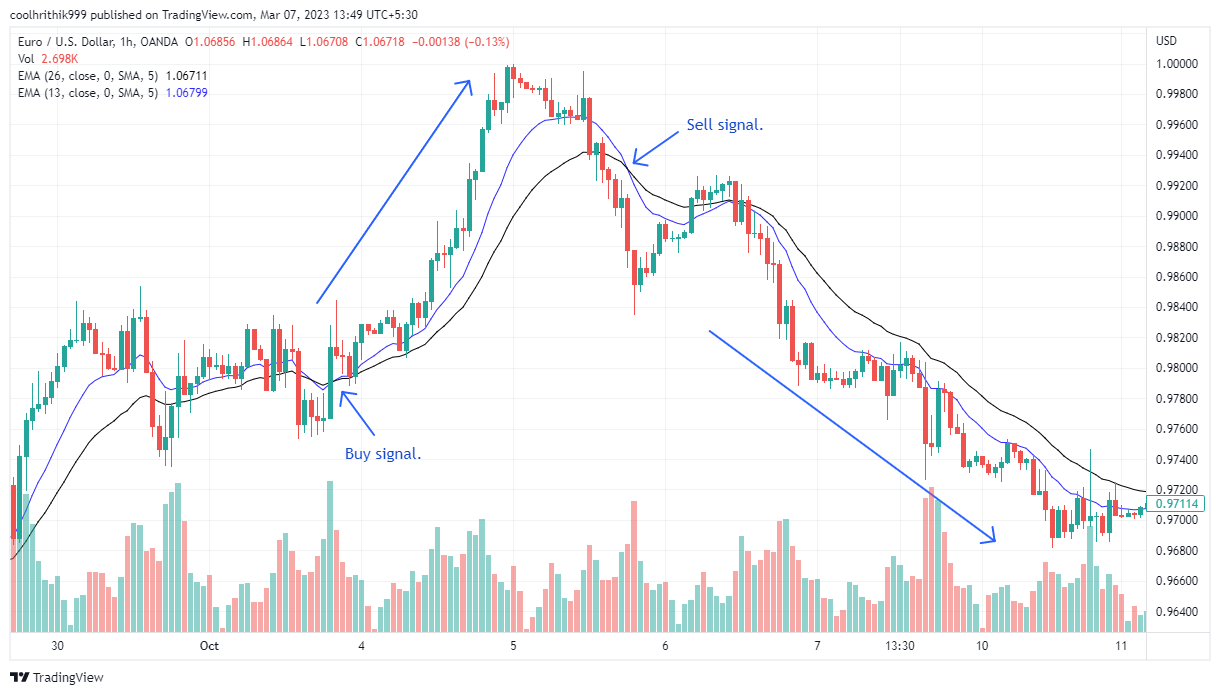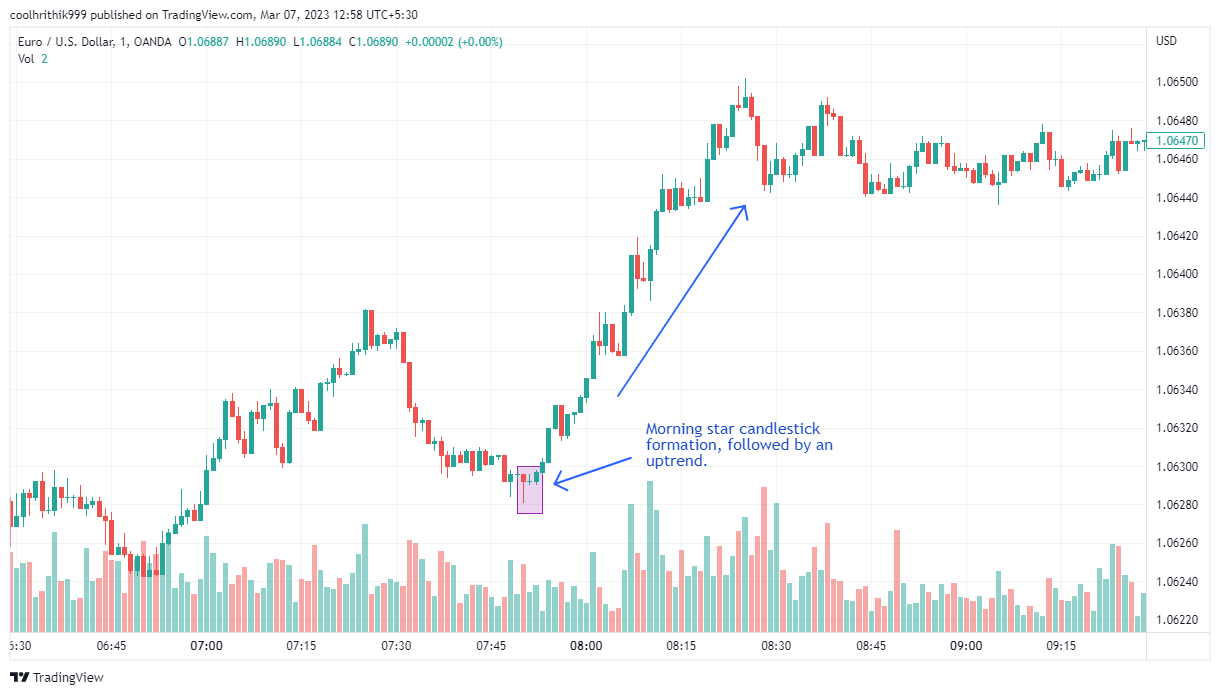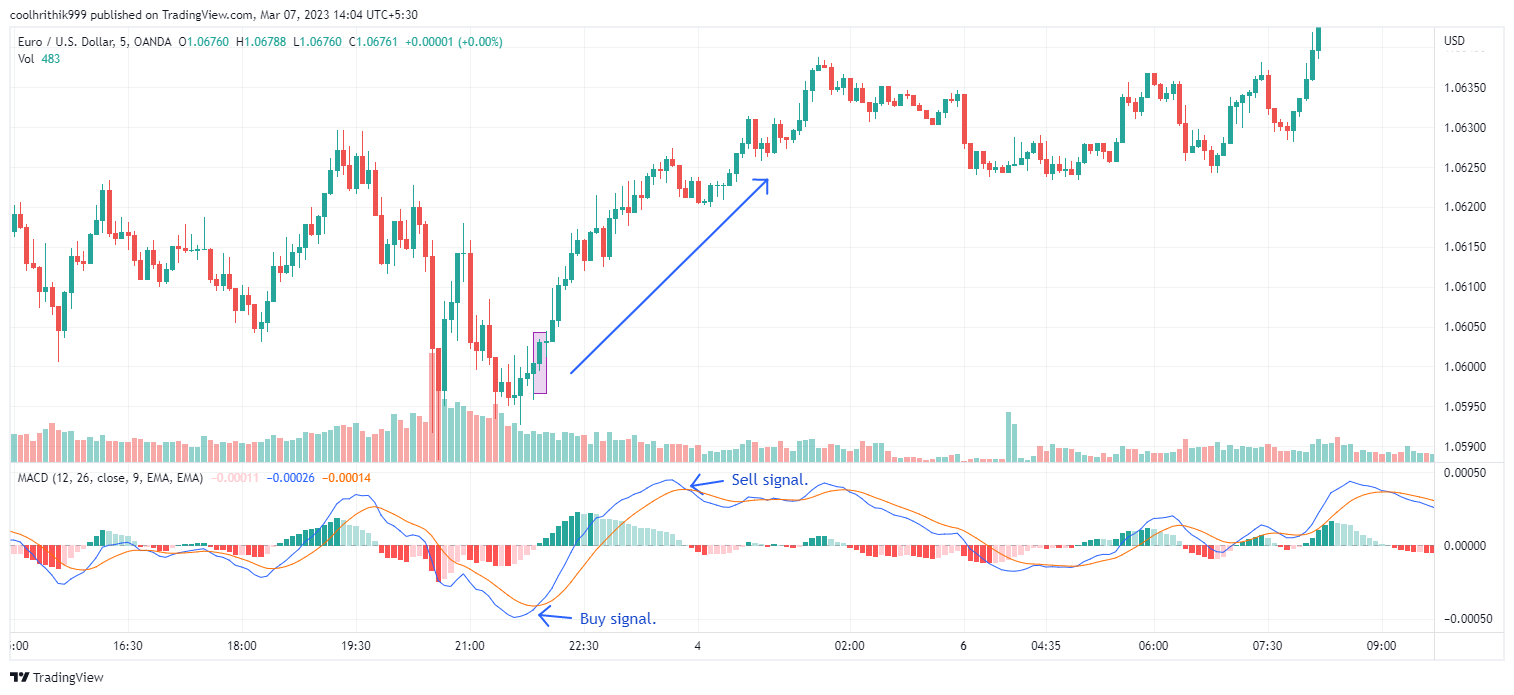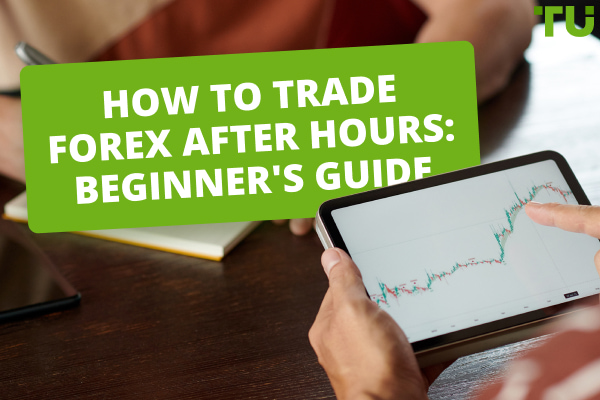Simple Forex Trading Strategies for beginners
Forex trading can be an exciting and profitable venture, but it can also be overwhelming for beginners. With so many different strategies and approaches to choose from, it can be challenging to know where to start. Fortunately, some simple and effective Forex trading strategies are perfect for beginners. In this article, the experts at TU will explore six of the best Forex trading strategies for beginners, complete with examples and guidance on entry points, targets, and stop losses.By the end of the article, readers will have a solid foundation to start trading Forex with confidence.
According to Traders Union’s experts, the following are the easiest and most effective Forex trading strategies for beginners:
Trend Following strategy;
Breakout strategy;
Scalping strategy;
Support and Resistance strategy;
Moving Average strategy;
Price Action strategy.
What is a Forex trading strategy?
A Forex strategy is a set of rules and guidelines that a trader uses to make informed decisions about when to buy or sell currency pairs in the Forex market. A successful strategy is based on a trader's personal preferences, risk tolerance, and overall market analysis. By following a well-defined strategy, traders can minimize the impact of emotional biases and make consistent, profitable trades.
Characteristics of a successful strategy:
Experts have studied numerous trading strategies that have shown reasonable signs of success and noted the following common elements:
Clarity: A successful strategy should be clear and easy to understand. It should define when to enter and exit trades, the risk management plan, and the trading timeframe.
Consistency: A strategy should be consistent in its application. The rules and guidelines should be followed without deviation to maintain consistency in trading decisions.
Adaptability: The Forex market is constantly changing, so a successful strategy should be adaptable to changing market conditions. A trader should be able to adjust the strategy to match current market trends and conditions.
Risk management: A successful strategy should include a clear plan to minimize potential losses. This includes setting stop-loss orders and having a predetermined exit strategy.
Backtesting: A strategy should be backtested to ensure its effectiveness in different market conditions. This involves testing the strategy on historical data to see how it would have performed in the past.
Review of typical approaches to creating a strategy:
There are several typical approaches to creating a Forex trading strategy. These include:
Technical analysis: This approach involves analyzing past price and volume data to identify patterns and trends. This can help traders determine when to enter and exit trades.
Fundamental analysis: This approach involves analyzing economic and political events to predict market movements. This can help traders make informed trading decisions based on news events.
Price action: This approach involves analyzing the movement of the price itself rather than using technical indicators. This can help traders identify critical levels of support and resistance.
Automated trading: This approach involves using computer algorithms to execute trades automatically. This can help traders save time and make more accurate trades.
6 simple strategies for Forex beginners
If you're a beginner looking to start trading Forex, there are several simple and effective strategies you can use to get started. Here are six of the best strategies for beginners according to our experts:
Trend-Following strategy
This strategy involves identifying the direction of the market trend and making trading decisions based on that trend. Traders can use technical indicators, such as moving averages or the MACD, to identify the trend and enter trades in the direction of the trend. Entry points can be identified when the price retraces back to the moving average or trendline.

Image: Trend-Following strategy
Breakout strategy
This strategy involves identifying critical support and resistance levels and making trading decisions based on how the price reacts to these levels. Traders can enter trades when the price breaks through a support or resistance level, expecting the breakout to continue in the same direction. Entry points can be identified by waiting for a confirmed breakout, with a stop loss placed below the support or resistance level.

Image: Breakout strategy
Moving average crossover strategy
This strategy involves using two moving averages, a shorter-term and a longer-term one, to identify trends in the market and make trading decisions based on when the two moving averages crossover. Traders can enter trades in the direction of the crossover (shorter-term MA crossing longer-term average), with the expectation that the trend will continue in that direction. Entry points can be identified when the shorter-term moving average crosses above or below the longer-term moving average.

Image: Moving average crossover strategy
Price action strategy
This strategy involves analyzing the price movement of a currency pair and making trading decisions based on price patterns, such as trends, support and resistance levels, and candlestick patterns. Traders can enter trades based on these price patterns, with the expectation that prices will continue in the same direction. Entry points can be identified by waiting for a price pattern to form and then entering the trade when it is confirmed. Some examples of candlestick patterns are bullish-engulfing, doji, morning star, etc.

Image: Price action strategy
Support and resistance strategy
This strategy involves identifying key support and resistance levels in the market and making trading decisions based on how the price reacts to these levels. Traders can enter trades when the price bounces off a support or resistance level, with the expectation that the price will continue in the same direction. Entry points can be identified by waiting for a confirmed bounce off a support or resistance level.

Image: Support and resistance strategy
Scalping strategy
This strategy involves making multiple trades throughout the day, to profit from small price movements. Traders can use technical indicators, such as the RSI or Stochastic Oscillator, to identify oversold or overbought conditions and enter trades in the direction of the short-term trend. Entry points can be identified by waiting for a pullback or reversal at key levels.

Image: Scalping strategy
In the above illustration, we see a scalping trade with the help of MACD indicator. A trader would enter the trade at the MACD buy signal (price highlighted by the rectangular box) and exit at the MACD sell signal. Traders ideally use a time frame between 30 seconds to 15 minutes for this strategy, and a scalping trade can last for anywhere between seconds to minutes (based on the signal generated by the indicator being used.)
Best Crypto Scalping Strategies and Tools for BeginnersHow to choose a Forex trading strategy for beginners?
When selecting a Forex trading strategy, beginners may feel overwhelmed by the numerous available options. However, choosing the appropriate strategy is vital for succeeding in the Forex market. Here are some key considerations to bear in mind while selecting a Forex trading strategy:
Setting your trading goals and style: Defining your trading goals and style before selecting a trading strategy is crucial. It will assist you in determining the type of strategy that is most appropriate for your requirements. For example, if you are seeking short-term profits, a scalping strategy may be appropriate, while a trend-following strategy may be more appropriate for longer-term goals. You can read about choosing a trading strategy depending on your type of thinking in the Traders Union article.
Assessing your knowledge and experience: It is critical, to be honest with yourself about your knowledge and experience in the Forex market. As a beginner, starting with a simple strategy that corresponds to your experience level is preferable. As you gain more knowledge and experience, you can progress to more complex strategies gradually.
Analyzing the market and strategy alignment: Choosing a trading strategy that corresponds to the current market conditions is essential. For instance, a trend-following plan may perform well in a trending market but not in a sideways market. Therefore, assessing the market and selecting a strategy that corresponds to the current conditions is critical.
Test your strategy: After selecting a trading strategy, it is critical to test it on a demo account. This allows you to practice trading without risking actual money. Furthermore, testing your strategy on a demo account allows you to identify any flaws and refine your strategy before trading with real money.
Top tips for Forex beginners
For beginners looking to enter the Forex market, here are some expert tips to consider:
Utilize learning resources and training: The Forex market can be complex and challenging, making it crucial to learn as much as possible before diving in. Utilize learning resources such as books, articles, online courses, and tutorials to gain a solid understanding of the market and trading strategies.
Use a demo account: Practicing with a demo account is a great way for beginners to gain experience trading in the Forex market without risking real money. A demo account allows you to familiarize yourself with the platform, test trading strategies, and refine your skills.
Start with a minimal deposit: While Forex trading can be lucrative, it's essential to start small and minimize risk as a beginner. Start with a minimal deposit and gradually increase your investment as you gain more experience and confidence.
Trade with minimal risks: Trading in the Forex market carries inherent risks, but it's important to manage these risks effectively. Beginners should focus on minimizing risk by setting stop-loss orders and avoiding emotional trading decisions.
How do I know if a Forex trading strategy is working for me?
Once you have selected and implemented a Forex trading strategy, it is essential to evaluate its effectiveness over time. Here are some expert tips on how to determine if a Forex trading strategy is working for you:
Track your performance: Keep track of your trades and performance over time. Record the number of successful trades and the amount of profit/loss. By doing so, you can compare your performance to your trading goals and determine if your strategy is working for you.
Compare to your trading goals: Your trading goals are the objectives you have set for your Forex trading activities. If your trading strategy is helping you achieve these goals, it's an indication that the strategy is effective. If not, you may need to reassess and modify your strategy.
Keep a trading journal: A trading journal is an excellent tool for evaluating the effectiveness of your trading strategy. It is essential to keep track of specific information regarding every trade made, such as the points at which you entered and exited, the reasoning behind your decision to enter the trade, and any modifications or adaptations you made to your trading strategy. Over time, you can use this information to identify patterns and make necessary adjustments to your strategy.
Make adjustments: No trading strategy is perfect, and adjustments may be necessary over time. Keeping a trading journal can help you identify areas where your strategy needs improvement. That being said, it's also essential to be patient and give your strategy time to work before making significant changes.
Are Forex trading strategies guaranteed to make money?
Forex trading strategies are not guaranteed to make money. While a good trading strategy can increase your chances of success in the Forex market, there is no fool-proof method to ensure profit. The success of a trading strategy depends on several factors, including market conditions, individual trading skills, and risk management practices.
Market conditions can be unpredictable and volatile, leading to unexpected losses. Additionally, even the most well-designed trading strategy may not be effective in all market conditions. It's essential to keep in mind that no trading strategy is perfect, and losses are a normal part of trading.
Individual trading skills, such as the ability to analyze charts and identify trends, are also crucial to success in the Forex market. Without the necessary skills, even the best trading strategy may not yield positive results.
Finally, risk management practices are essential to minimize losses and protect your capital. Without proper risk management, a trading strategy may result in significant losses, even if it has worked well in the past.
In conclusion, while Forex trading strategies can improve your chances of success, there is no guarantee of profit. It's important to understand the risks involved in Forex trading and to develop a comprehensive strategy that takes into account market conditions, individual trading skills, and risk management practices.
Best Trading Tools To Improve Your Analysis SkillsHow to choose the best Forex trading strategy
When choosing the best Forex trading strategy, it's important to consider several factors that can impact your success in the market. These include:
Time frame: One of the first things to consider when choosing a Forex trading strategy is your preferred time frame. Different time frames are better suited for different strategies, such as day trading, swing trading, or long-term trading. So, it's important to choose a time frame that aligns with your trading goals and lifestyle.
Number of trading opportunities: Another factor to consider is the number of trading opportunities available with a particular strategy. Some strategies, such as scalping, can generate a large number of trades in a short period, while others, such as trend-following, may generate fewer trades but with a higher probability of success. It's important to choose a strategy that provides enough trading opportunities to meet your goals without overwhelming you with too many trades.
Position size: The size of your trading position is another important factor to consider when choosing a Forex trading strategy. Different strategies may require different position sizes, depending on factors such as market volatility and risk tolerance. It's important to choose a position size that allows you to manage risk effectively and avoid excessive losses.
Risk management: A successful Forex trading strategy also requires effective risk management practices. This includes setting stop-loss orders, using proper position sizing, and avoiding over-trading. It's important to choose a strategy that aligns with your risk tolerance and allows you to manage risk effectively.
Backtesting and forward testing: Before using a Forex trading strategy with real money, it's essential to test it thoroughly using historical data and forward testing on a demo account. This can help you evaluate the effectiveness of the strategy, identify any weaknesses or limitations, and make any necessary adjustments.
Best Forex brokers for beginners



Summary
In summary, it's crucial to develop a comprehensive trading strategy that aligns with your trading goals and style and to evaluate its effectiveness over time. Additionally, using resources such as learning materials and demo accounts can help build trading skills and minimize risks. Ultimately, successful Forex trading requires discipline, patience, and a willingness to adapt to changing market conditions.
FAQs
What is the easiest Forex trading strategy?
While there is no one-size-fits-all answer to this question, many experts recommend starting with a simple strategy that aligns with your trading goals and style, such as a trend-following or breakout strategy.
How much time should I spend on learning and practicing a Forex trading strategy?
It's recommended to devote a significant amount of time to understanding the basics of Forex trading and developing a trading plan before using real money. That being said, the actual amount of time you should spend learning and practicing a Forex trading strategy depends on your individual goals and level of experience.
Which strategy is most profitable in Forex?
There is no single most profitable strategy in Forex trading, as success depends on several factors such as market conditions, individual trading skills, and risk management practices. Therefore, it's important to research and test different strategies to find the one that works best for you.
What is the simplest trading strategy ever?
The simplest trading strategy is often considered to be the "buy and hold" strategy, which involves buying security and holding onto it for an extended period. However, this strategy may not be suitable for all traders or market conditions, and more complex strategies may be necessary to achieve long-term success in Forex trading.
Team that worked on the article
Chinmay Soni is a financial analyst with more than 5 years of experience in working with stocks, Forex, derivatives, and other assets. As a founder of a boutique research firm and an active researcher, he covers various industries and fields, providing insights backed by statistical data. He is also an educator in the field of finance and technology.
As an author for Traders Union, he contributes his deep analytical insights on various topics, taking into account various aspects.
Dr. BJ Johnson is a PhD in English Language and an editor with over 15 years of experience. He earned his degree in English Language in the U.S and the UK. In 2020, Dr. Johnson joined the Traders Union team. Since then, he has created over 100 exclusive articles and edited over 300 articles of other authors.
The topics he covers include trading signals, cryptocurrencies, Forex brokers, stock brokers, expert advisors, binary options. He has also worked on the ratings of brokers and many other materials.
Dr. BJ Johnson’s motto: It always seems impossible until it’s done. You can do it.










